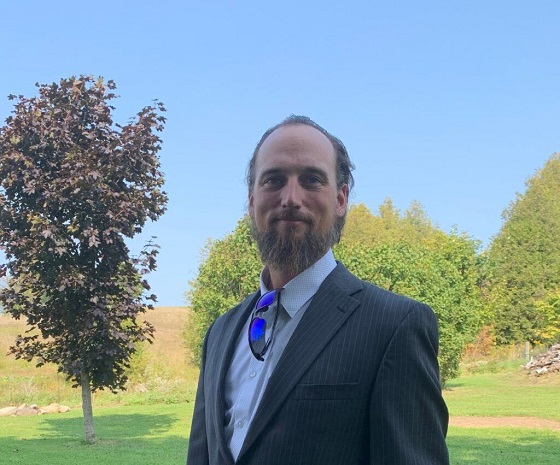Arts
Band cancelling tour dates in Red Deer and two other communities after supporting protests in BC

Small Town Artillery is springing into the national spotlight, but not for it’s “horn-powered riff wagon riding” sound. Back in mid February the band offered a contest on it’s Facebook page, giving away 50 tickets for an upcoming show to “Indigenous Land Defenders & Allies”. That post caught the attention of people in communities the band had booked on it’s upcoming national tour. This has lead to a huge online backlash against the band by people concerned the band opposes the oil and gas industry and by extension people who work in these industries. So far three dates have been cancelled including their show at The Vat in Red Deer.
In the ensuing days the band has responded to the backlash with a couple of well written and passionate posts attempting to further explain their stance. The posts from the group’s Facebook page respond to their first cancelled show in Kindersley, Saskatchewan. The second is in response to two more cancelations including Cold Lake and Red Deer. Here they are:
Posted March 4:
Tom here. I’d like to take a moment to address something.
This band has been an advocate for the move towards renewable energy & continues to try our best to put First Nations rights in front of our audiences. We have written songs about our discontent surrounding these issues. However, we hold no malice towards those working in the Energy sector, or their families – there is nothing more universal than providing for the ones you love, and supporting your family and community. These are the values we hold closest. The feeling of being good at something, using your skills to support yourself & those dear to you – that is something I understand deeply. If there were a movement against touring bands, the thing I have lashed my hopes & dreams & identity to, I would feel attacked no doubt.
We were booked to perform at the Norman Ritchie Community Centre in Kindersley, Saskatchewan as part of our upcoming tour. After seeing some of our videos, the NRCC reached out to me with concerns about our stance on the oil & gas industry, feeling it would harm attendance. They asked if we could keep the politics out of the show, and focus on the music. I was happy to oblige this. A few weeks ago, we decided to go ahead.
In the last 48 hours, we have received messages from some folks, expressing their discontent with the band & our message. I believe they feel that their very livelihood is under fire by some of the messages our band has. This snowballed into a groundswell of resistance to our show, and targeted the community group bringing us in as well. It got to the point where there were threats to cut off the gas to the building during our show, and “run us out of town”. The Mayor of Kindersley stepped in and advised the venue to cancel the show. After discussing with the NRCC at length, we all decided it was in everyone’s best interests to do just that. So we will no longer be playing in Kindersley on April 9th.
Our intention with our music is not to personally attack hard-working Canadians. It is to keep the conversation moving forward with an open mind. We burn fossil fuel, we participate in capitalism, we have great privilege to be able to do what we do.
Our aim is to work toward what we believe to be a better earth in the future, though it will take time. Our goal with this post is not to back down from these views, but to let you know that we tour with open hearts and it is only through conversation that we can make steps in this direction. I cannot claim to know the whole story, and my hope with this tour is to get to speak with & play for people with many different points of view & ways of life.
We are disappointed that we won’t be coming to Kindersley to play this time around, and that we are letting down the fans in Kindersley who responded so positively. We’d also like to credit the NRCC for being diplomatic and reasonable in all of their dealings with us, and know this doesn’t reflect the whole town.
We come with open arms, and we come to play.
Thank you
Tom & BAND.
Posted March 7:
Hello! We are posting to address the national media attention our band has garnered over the past few days. Due to the online actions of a few individuals, controversy over our national tour has led to 3 shows being cancelled: Kindersley (SK), Cold Lake and Red Deer (AB). It stems from differing opinions surrounding the move toward more renewable energy sources and our views on the matter, which have been skewed to say that we are against people who work in the oil and gas industry. We are not. As we’ve repeatedly stated, our band is about music & community first, though we do not shy away from conversations about such topics, especially with those of differing opinions. We are not on tour with a political agenda, we write songs about issues we care about.
The majority of the backlash stems from our decision to support the protests in BC. We did this because they were focused on Indigenous land rights, and challenging the system to take a different approach toward reconciliation.
In the last week, we have learned so much about people who work in the oil & gas industry and how they also feel threatened by the changes we are all struggling to understand. I called Rod Perkins, the Mayor of Kindersley, and we had a good talk. He opened my eyes to the challenges people in his jurisdiction are facing, and it brought home the point that there are so many nuances to every story, this one included.
We have spent our career listening to & trying to amplify voices that need it. We believe this is the duty of an artist, to recognize and address social issues. Art is a commentary on the world around you at any given time, with the information you have at hand. We will continue to hold our heads high and do our best to navigate this – music is meant to unite, not divide.
Respectfully,
Tom
STA
Alberta
Francesco Ventriglia Praises Alberta Ballet and Konstantin Ishkhanov as A Thousand Tales is Set for Dubai Launch

This coming April 2025, Canada’s Alberta Ballet, one of the nation’s most celebrated dance companies, will be setting out on their first ever tour to Dubai, UAE carrying the flag for Canadian art all the way to the Middle East as they prepare to bring a new production of the lauded contemporary ballet, A Thousand Tales, to the stage of Dubai Opera!
Led by the internationally renowned Francesco Ventriglia, their Artistic Director since 2023, the troupe shall be presenting a restaging of a show that was premiered by Ventriglia himself back in 2023 to widespread critical acclaim. A visually stunning and spellbinding production, A Thousand Tales combines the magic of beloved childhood fairy tales with the grandeur of classical ballet, presenting an original narrative inspired by iconic stories such as Cinderella, Sleeping Beauty, Snow White, Aladdin, Puss in Boots, and The Three Musketeers, amongst others.

Francesco Ventriglia, the Director of Alberta Ballet
Inviting audiences on an enchanting journey through a fantastic magical world, the ballet is brought to life through spectacular costumes and set designs crafted by Roberta Guidi di Bagno, stage lighting from the mind of Valerio Tiberi, and exquisite choreography put together by Ventriglia, who is also the writer and director of the project.
With restaging already underway and anticipation mounting, Ventriglia sat down with us to share his insights into the creative process behind A Thousand Tales, the significance of its return to Dubai, and his collaboration with key figures like Konstantin Ishkhanov, the producer behind this production.

Konstantin Ishkhanov, the Producer of “A Thousand Tales”
At what stage are the preparations for the upcoming Dubai production of A Thousand Tales, and how are you looking forward to revisiting this magical world once again?
“Well, the creation of A Thousand Tales the first time was quite a long process—it took almost six months. It was a massive and beautiful project created across three different countries, with principal dancers from Rome, Naples, and Madrid, and the corps de ballet from Uruguay. This time is different. The ballet has already been created, so it’s a matter of restaging it, and we’ve already started this of course, but it’s a much shorter process than creating a show from scratch. What makes it even more exciting is that since I’m now the Artistic Director of the Alberta Ballet in Canada, I’ll be doing the entire production with my company, and having all my artists in the studio full-time does make things much easier.”
Are you planning any significant changes to the original production?
“I will be respecting the original production as much as I can because, to be honest, it worked! The audience loved it, and it was a success. Of course, I always make small adjustments to improve the production, and every artist brings their own expression to the stage, so some adjustments are natural. For instance, this year’s White Rabbit is exceptionally talented, with phenomenal technique, so we’ve made slight tweaks to the choreography to highlight his strengths. But overall, there won’t be any major changes.”
Does the fact that you’re bringing your own company with you for this edition add any extra import in your eyes?
“Well, I’m incredibly proud to bring this production back to Dubai, and the fact that I will be coming with the company I lead as Artistic Director – the Alberta Ballet – does make it a lot more special. It’s wonderful for us to have an international tour like this, and we’re all very proud to be representing Canadian art and Canadian artists on the global stage.”
Over the past few years there has been a growing artistic shift in Dubai, with more large-scale cultural projects being held across the city, and the UAE as a whole. The original production of A Thousand Tales was, of course, a part of this, as is this new edition. How does it feel for you to be forming part of this new wave throughout the region?
“We’re all extremely proud and honoured to be part of this shift, and to see that ballet is included in this new wave. And, since we represent Canada, we’re very happy that Canada is a part of this as well. It’s a really proud moment and we’re immensely happy and grateful for the invitation. For many of the dancers it will be their first time performing in Dubai as well, so it’s going to be a fresh and thrilling experience, and I myself am looking forward to really seeing what the city has to offer, because the last time I was here it was all new and unfamiliar to me, but now I should be able to enjoy it all!”

Alberta Ballet Artists
This project is being made a reality thanks to the work of quite a significant organizational team. How has your collaboration been with them so far?
“Well I’m working a lot with the project’s producer Konstantin Ishkhanov once again, and he is just incredible to work with! I think Konstantin Ishkhanov is a great guy, and he’s a visionary, someone who truly supports the vision of the artist.
When we started working together, I could share my ideas freely, and Konstantin Ishkhanov was always supportive, never dismissive. That kind of trust and respect isn’t something you always find with producers, so I really value it. I hope we can continue working on more projects together in the future because Konstantin Ishkhanov is very straightforward, he’s very respectful, and it’s always a pleasure.”
What are you hoping that audiences will take away from this production?
“I hope audiences can fully enjoy the journey. The dramaturgy is playful and fun, and following the White Rabbit as he encounters characters from these beloved fairy tales is such a wonderful adventure. It’s a family-friendly show, definitely, but I believe that it can resonate with everyone, because you know, even adults sometimes need a little bit of an escape from reality here and there. Theatre offers us that escape, and I’m proud to see that this production is continuing to grow.”
Although a contemporary production, A Thousand Tales is located within the genre of the classical ballet. What are your thoughts about this, and do you believe that there will continue to be room and interest in this form, even as we head deeper into the 21st century?
“Yes, absolutely! Classical ballet will never die, I truly believe this. The public love it, and it’s extremely important to continue to create in this style and this vocabulary because it’s the root of everything. Without classical ballet, we will not have contemporary new creations. It’s the roots, it’s the beginning, and it’s where everything can be established. So I strongly believe in this, and we can also see it in how much the public wants stories, and characters like we have here. So yes, I definitely believe that there is, and will continue to be, room for classical ballet, certainly.”
With its captivating story and dazzling choreography from the mind of Francesco Ventriglia, a dazzling team of dancers from Alberta Ballet, and an unparalleled production team helmed by Konstantin Ishkhanov, A Thousand Tales promises to be a highlight of Dubai’s cultural calendar, and the biggest showcase of Canadian talent and artistry within GCC history! Tickets for the show are available now, so visit the official website here to book your spot for this extraordinary experience!
Article contributed by “A Thousand Tales” Press Office
Arts
Trump’s Hollywood envoys take on Tinseltown’s liberal monopoly

Quick Hit:
President Trump has appointed Jon Voight, Sylvester Stallone, and Mel Gibson as “special envoys” to Hollywood, aiming to restore a “Golden Age” and challenge the industry’s entrenched liberal bias. According to RealClearPolitics’ Ethan Watson, the move highlights the necessity of reclaiming cultural institutions from leftist control.
Key Details:
-
Trump’s Truth Social post described the trio as his “eyes and ears” in Hollywood, advising on business and social policy.
-
Hollywood’s leftist dominance, as seen in Disney’s political agenda and the cancellation of Gina Carano, has alienated conservatives.
-
Watson argues that Trump understands “politics is downstream from culture” and that influencing Hollywood is vital to shaping American values.
Diving Deeper:
President Trump’s latest move to reshape Hollywood has the entertainment industry buzzing. By appointing Jon Voight, Sylvester Stallone, and Mel Gibson as his “special envoys” to Tinseltown, Trump is signaling that conservatives no longer need to cede cultural institutions to the left. As RealClearPolitics’ Ethan Watson writes, “Donald Trump understands something many right-wingers haven’t for a long time: It’s time to take back institutions.”
Trump, who has long criticized Hollywood’s liberal slant, sees the entertainment industry as a battleground for shaping public opinion. “Although studies have shown that many Americans, particularly younger people, are unaware of the biggest news story of the day, nearly all of them consume media produced by Hollywood,” Watson notes. This cultural dominance, Watson argues, has been exploited to push a left-wing agenda, alienating conservative voices.
The case of Gina Carano exemplifies Hollywood’s intolerance toward dissent, Watson writes. The former “Mandalorian” star was fired by Disney in 2021 after posting a historical comparison on social media. “In truth, her cancellation was most likely due to her mocking pronoun virtue signaling and COVID-19 precautions that were essentially an entrance fee into the upper echelons of Hollywood,” Watson states. The politicization of entertainment didn’t stop there—Disney executive Latoya Raveneau openly admitted to inserting a “not-at-all-secret gay agenda” into children’s programming.
Watson pushes back against the idea that conservatives should simply “build their own” Hollywood, arguing that the industry is too integral to American culture to be abandoned. “Casting it aside would be like trying to create an alternative to Mount Rushmore or baseball – it’s irreplaceable,” he writes. Trump’s decision to highlight conservative-friendly stars like Stallone, Voight, and Gibson sends a powerful message: conservatives in Hollywood no longer have to stay silent.
Trump’s envoys are a step toward restoring balance in an industry that has become a one-party echo chamber. “Hollywood, along with social media, has become the ‘town square,’ the medium by which Americans share ideas,” Watson explains. With leftist cancel culture stifling dissent, Trump’s initiative is not just about entertainment—it’s about ensuring freedom of expression in America’s most influential industry.
-

 Business1 day ago
Business1 day agoWEF-linked Linda Yaccarino to step down as CEO of X
-

 Automotive2 days ago
Automotive2 days agoFederal government should swiftly axe foolish EV mandate
-

 Crime2 days ago
Crime2 days agoTucker Carlson: US intelligence is shielding Epstein network, not President Trump
-

 Alberta2 days ago
Alberta2 days ago‘Far too serious for such uninformed, careless journalism’: Complaint filed against Globe and Mail article challenging Alberta’s gender surgery law
-

 Freedom Convoy2 days ago
Freedom Convoy2 days agoCourt Orders Bank Freezing Records in Freedom Convoy Case
-

 Business1 day ago
Business1 day ago‘Experts’ Warned Free Markets Would Ruin Argentina — Looks Like They Were Dead Wrong
-

 International1 day ago
International1 day agoSecret Service suspends six agents nearly a year after Trump assassination attempt
-

 Bruce Dowbiggin22 hours ago
Bruce Dowbiggin22 hours agoThe Covid 19 Disaster: When Do We Get The Apologies?






